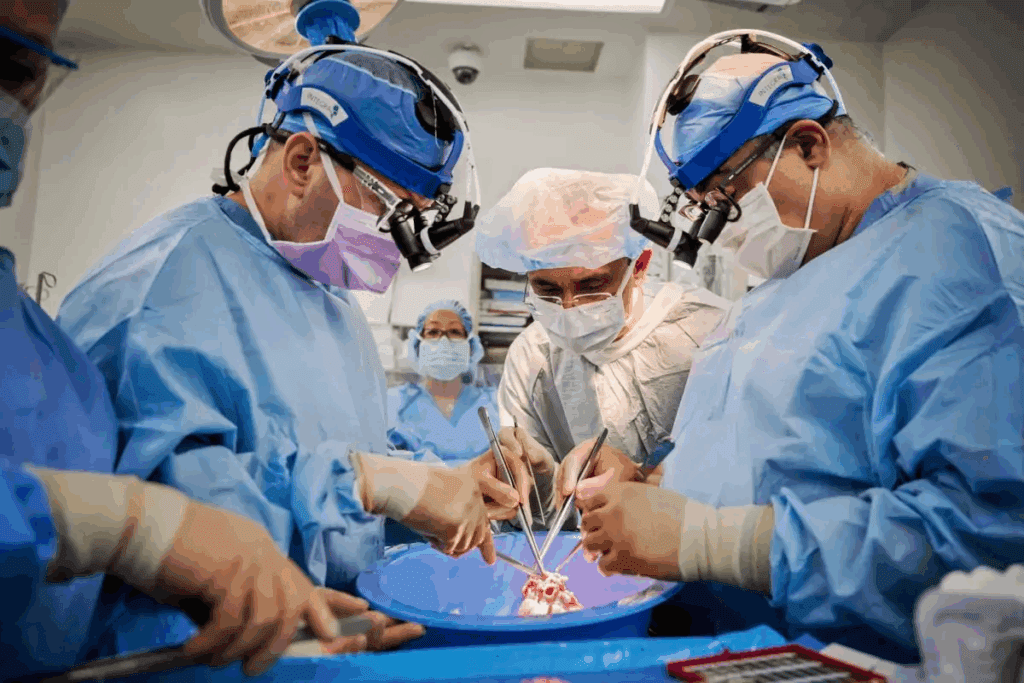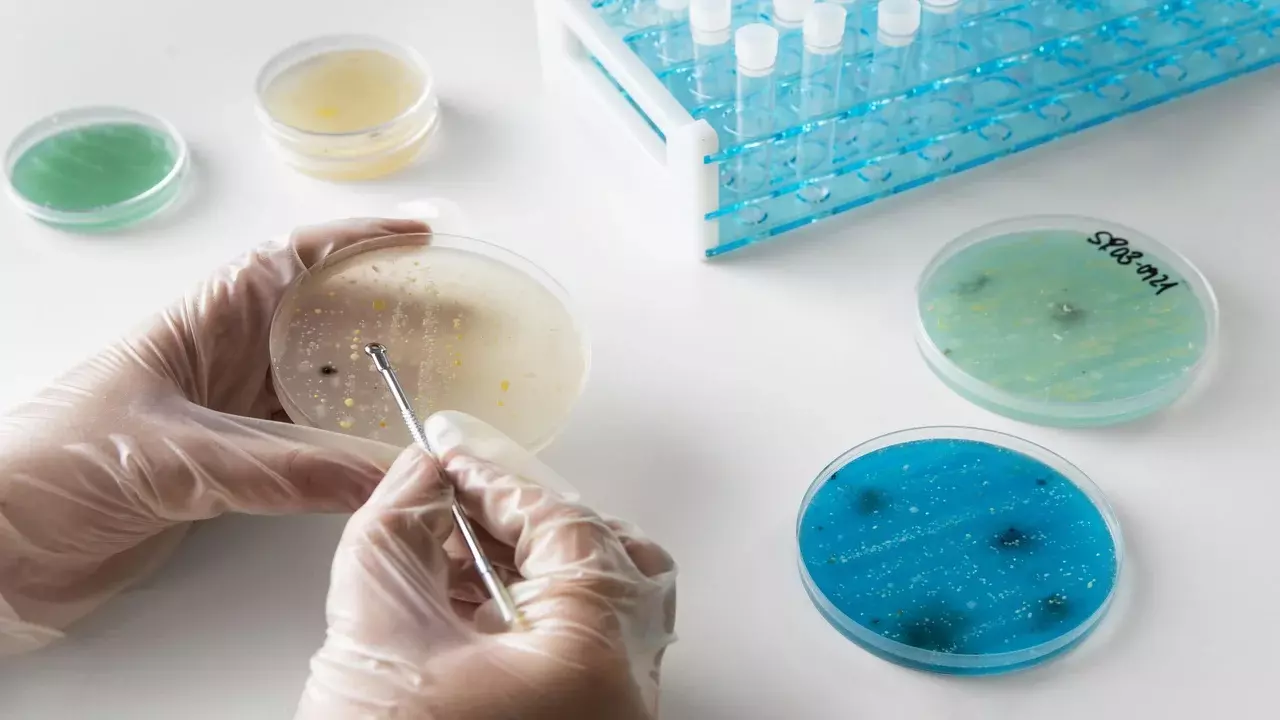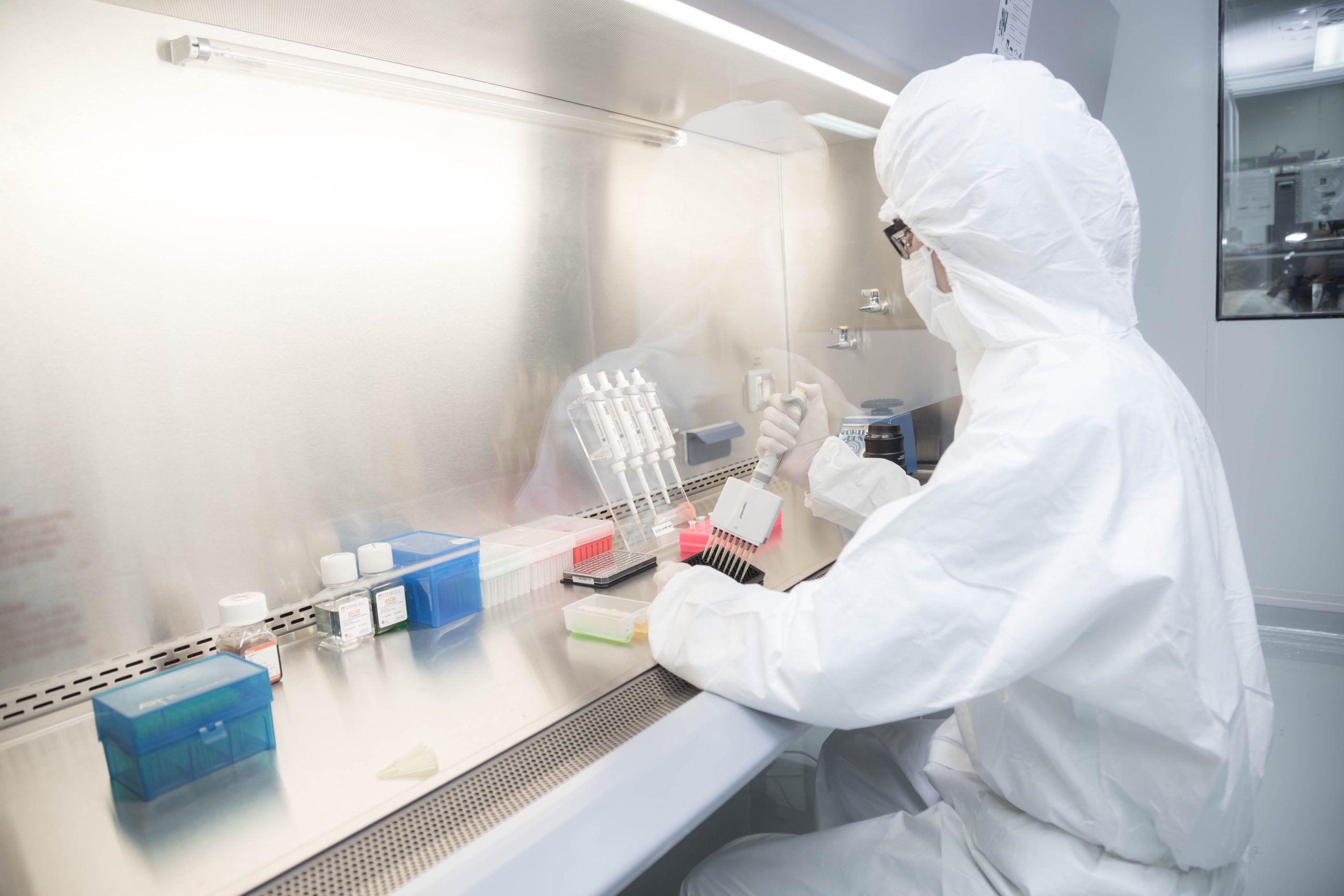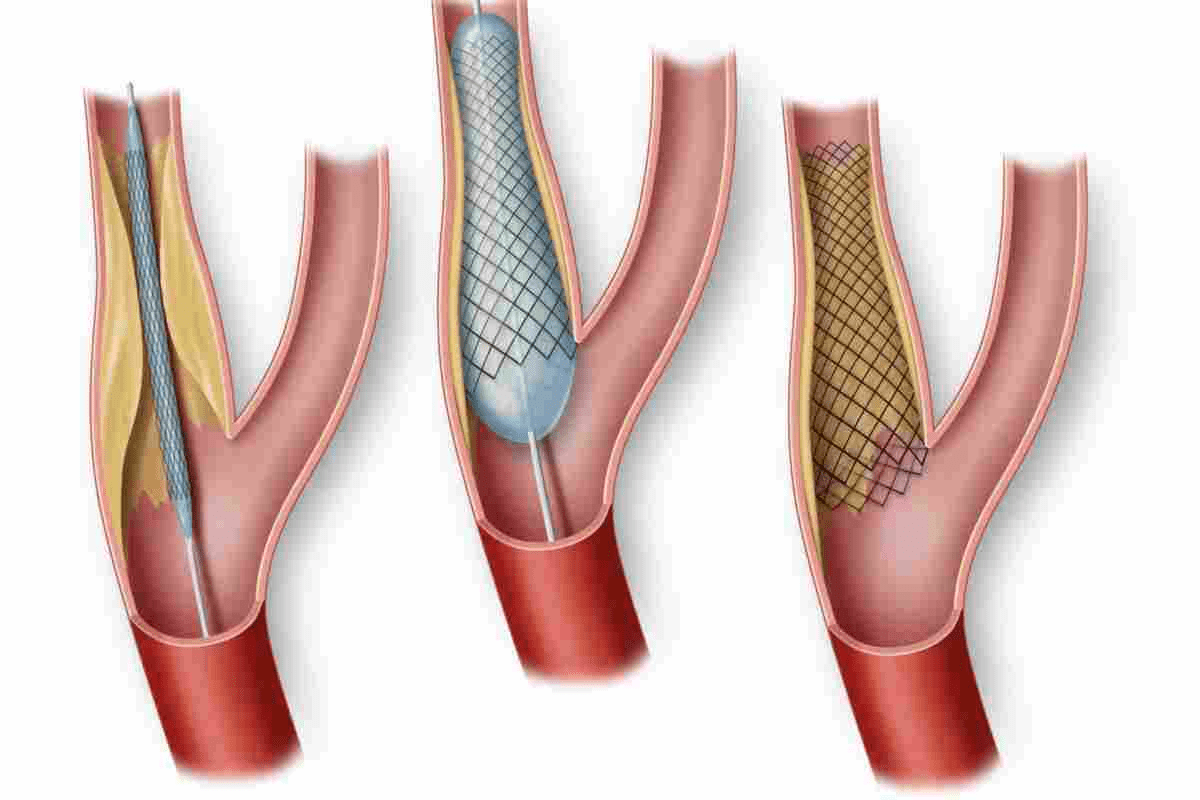Last Updated on November 26, 2025 by Bilal Hasdemir

At LivHospital, we focus on new treatments for heart disease. Heart surgery balloon procedures, like balloon angioplasty, are small and don’t cut open the body. They help open up blocked blood vessels. Find 10 key facts about heart surgery procedure and how stenting helps restore flow.
This life-enhancing method uses a tiny balloon to make the artery bigger. This lets blood flow better. It greatly improves how patients feel and live their lives. Let’s look at the main points about heart surgery balloon procedures and stenting.
Key Takeaways
- Balloon angioplasty is a minimally invasive procedure.
- It is used to open narrowed or blocked blood vessels.
- The procedure involves using a tiny balloon to widen the artery.
- Improved blood flow enhances patient outcomes and quality of life.
- LivHospital is committed to innovative treatments for cardiovascular disease.
What Are Heart Surgery Balloon Procedures?

Cardiac balloon interventions have changed how we treat heart disease. They offer a less invasive option compared to traditional surgery. These procedures help widen narrowed or blocked coronary arteries. This improves blood flow and lowers the risk of heart attacks.
Minimally Invasive Techniques for Blocked Vessels
Heart surgery balloon procedures use a cardiac balloon to open up blocked or narrowed coronary arteries. This minimally invasive technique is done through a small incision, usually in the groin or arm. It shortens recovery time and lowers the risk of complications.
A catheter with a deflated balloon is guided to the blocked area during the procedure. Once in place, the balloon is inflated. This compresses the plaque and widens the artery. This process, called angioplasty, helps restore blood flow to the heart muscle.
Types of Cardiac Balloon Interventions
There are several cardiac balloon interventions, each for different needs. Coronary angioplasty is common for opening narrowed or blocked coronary arteries. Another is balloon valvuloplasty, used for narrowed heart valves.
Cutting balloon angioplasty is used for harder cases. It has micro-blades on the balloon to score the plaque before dilation. This makes the procedure more effective.
Understanding the different cardiac balloon interventions shows their versatility and effectiveness in treating heart disease.
The Science Behind Cardiac Balloons

Cardiac balloons play a key role in modern cardiology. They are used in angioplasty to widen narrowed or blocked arteries. This improves blood flow to the heart muscle.
How Balloons Widen Narrowed Arteries
Cardiac balloons inflate to push plaque against the artery walls. This widens the artery. This method, called balloon angioplasty, is often paired with stenting to keep the artery open.
The balloon’s inflation is carefully managed to avoid harming the artery. The mix of balloon angioplasty and stenting is a common treatment for coronary artery disease. It’s a less invasive option compared to open-heart surgery.
Improving Blood Flow to Heart Muscle
By widening arteries, cardiac balloons boost blood flow to the heart. This reduces symptoms of angina and other heart issues. A stent is placed after balloon angioplasty to keep the artery open long-term.
Research shows stents with balloon angioplasty lower restenosis rates. Here’s a comparison of balloon angioplasty and stenting:
| Procedure | Description | Restenosis Rate |
| Balloon Angioplasty | Widening of narrowed arteries using a balloon | Higher |
| Stenting | Placement of a stent to keep the artery open | Lower |
Using both balloon angioplasty and stenting is a more lasting solution. It helps keep arteries open and improves heart health.
Combining Stents with Balloon Catheters
Combining stents with balloon catheters is now common in treating coronary artery disease. This method has greatly improved patient outcomes during angioplasty. We will look at why stents are key after balloon dilation and how they work.
Why Stents Are Essential After Balloon Dilation
Angioplasty uses a balloon catheter to widen narrowed arteries. But, the artery might collapse or narrow again without support. That’s where stents come in. A stent is a small, mesh-like tube that keeps the artery open after the balloon has widened it.
The use of balloon angioplasty and stenting is now the top choice for treating coronary artery disease. It greatly lowers the chance of the artery narrowing again.
Stents give the artery the support it needs to stay open. This improves blood flow to the heart muscle. Using stents with balloon catheters leads to better and longer-lasting results than balloon angioplasty alone.
The Mechanics of Stent Deployment
Deploying a stent involves several steps. First, the balloon catheter is placed at the narrowed part of the artery. Then, the balloon is inflated to widen the artery. Next, the stent is expanded to fit the artery’s size.
After that, the balloon is deflated and taken out, leaving the stent in place. The stent and balloon ensure the artery stays open. The stent acts as a scaffold, preventing the artery from collapsing. Over time, the stent becomes part of the artery wall, providing a lasting fix.
In summary, using stents and balloon catheters is a big step forward in treating coronary artery disease. Understanding the role of stents after balloon dilation and how they are deployed helps us see the complexity and success of modern angioplasty.
Balloon Angioplasty with Stenting: Standard of Care
Balloon angioplasty with stenting is now a key treatment for coronary artery disease. It has greatly improved how we treat blocked arteries.
Over time, we’ve seen big changes in treating coronary artery disease. At first, balloon-only angioplasty was used to open narrowed arteries. But, it had a big problem: a high chance of restenosis, or the arteries getting narrow again.
Evolution from Balloon-Only Approaches
Then, stenting was added to balloon angioplasty. Stents are tiny, mesh-like tubes that keep the artery open after it’s been widened. This combo has cut down on restenosis and improved long-term results.
In 2009, about 21 stents were used per 10,000 people. This shows how common this technology has become. By using both balloon angioplasty and stenting, we can give patients more lasting and effective treatments for coronary artery disease.
Current Treatment Protocols for Coronary Artery Disease
Today, we carefully check each patient’s condition before starting treatment. Angioplasty with stenting is now a common treatment for many. It’s a less invasive way to deal with blocked arteries.
We customize the treatment based on the blockage’s location and severity, and the patient’s overall health. Using drug-eluting stents has also helped improve results. These stents release medicine to prevent the arteries from narrowing again.
We keep up with the latest research and guidelines. This way, we make sure our patients get the best care for their condition.
Statistics on Cardiac Stent Procedures in the United States
Cardiac stent procedures show important trends in heart disease management in America. These statistics give insights into coronary artery disease and the success of stenting.
The 21 per 10,000 Population Rate and What It Means
About 21 people per 10,000 get cardiac stent procedures. This shows a big effort to treat heart disease in the U. S. population. It helps us understand the impact of heart disease and the role of stenting.
This rate shows stenting is a common choice for blocked arteries. The process involves putting a balloon in the heart to open narrowed vessels. Then, a stent is placed to keep the artery open.
Trends in Stent Usage Over the Years
Stent usage has changed a lot from 2009. New technology, updated guidelines, and changing patient needs have all played a part. Looking at these changes helps us see how heart care has evolved.
Stent technology has improved, leading to better patient results. Stenting is now often combined with medication and lifestyle changes. These steps show how heart stent and balloon procedures are key in cardiology today.
Balloon valvuloplasty is another procedure for valve issues. It’s less invasive than open-heart surgery. Yet, it’s not for all cases, showing the need for careful patient choice.
Balloon Valvuloplasty: Benefits and Limitations
For those with heart valve narrowing, balloon valvuloplasty is a less invasive option. It uses a balloon catheter to widen the valve. This improves blood flow and lessens symptoms of valve stenosis.
Treating Heart Valve Narrowing Without Open Surgery
Balloon valvuloplasty is great for those at high risk for surgery complications. It’s also for those with conditions that make surgery hard. This method avoids open surgery, leading to:
- Shorter recovery times
- Less risk of infection
- Reduced risk of complications from cardiopulmonary bypass
We use advanced imaging to guide the balloon catheter to the valve. This ensures it’s placed and inflated correctly. This approach greatly improves life quality for those with valvular heart disease.
When Valvuloplasty Is Not Enough
While effective for many, balloon valvuloplasty isn’t right for everyone. Sometimes, the valve is too damaged, or other factors make it less effective.
The table below outlines when valvuloplasty might not work:
| Condition | Valvuloplasty Suitability | Alternative Treatments |
| Severe valve calcification | Limited effectiveness | Surgical valve replacement |
| Significant valve regurgitation | Not recommended | Valve repair or replacement surgery |
| Multi-valve disease | Complex decision-making required | Combination of valvuloplasty and surgery, or surgery alone |
It’s key for patients to talk to a cardiologist. They can decide the best treatment based on the patient’s condition and medical history.
Heart Surgery Balloon Procedure Applications in Diagnosis
Cardiac balloons are used not just for treatment but also for diagnosis. They help check how well the heart is working and spot certain problems. This info is key for deciding on the best treatment.
Diagnostic Uses of Cardiac Balloons
Cardiac balloons play a big role in checking the heart’s health. They are mainly used to see if there’s any blockage in the heart’s main arteries. Doctors can measure the heart’s pressure and blood flow through these arteries.
Key diagnostic applications include:
- Measuring pressure within the heart chambers
- Assessing blood flow through the coronary arteries
- Evaluating the severity of coronary artery stenosis
- Guiding decisions regarding the need for interventions like stenting
Pressure Measurements and Functional Testing
Getting the heart’s pressure right is vital for diagnosing heart issues. Doctors use a balloon catheter to get exact pressure readings. This helps them understand how serious the heart problems are.
Functional testing, like fractional flow reserve (FFR), is also key. FFR uses a balloon catheter to measure pressure drops in narrowed areas. This tells doctors how serious the blockage is and what treatment is best.
Research shows that using balloons and stents together is better than just balloons. It means fewer repeat procedures are needed. This highlights the need for accurate diagnosis in choosing treatments.
Thanks to cardiac balloons, doctors can give more tailored care. This not only helps patients but also makes care better overall.
Clinical Outcomes: Balloon-Only vs. Stent Implantation
When we look at balloon-only angioplasty and stent implantation, we see big differences. The choice between them depends on the patient’s health, the blockage type, and the risk of restenosis.
Reduction in Repeat Procedures with Stenting
Research shows stenting cuts down on the need for more procedures. Stents keep the artery open, lowering the chance of it narrowing again. This leads to better long-term results.
- Stenting can lower repeat procedure rates by up to 50% in some cases.
- Drug-eluting stents have made outcomes even better by lowering restenosis risk.
- Patients who get stents often have fewer symptoms and a better quality of life.
Restenosis Rates Comparison
Restenosis, or artery narrowing, is a big worry with both methods. But, the rates differ a lot between balloon-only and stenting.
| Procedure | Restenosis Rate |
| Balloon-Only Angioplasty | Higher |
| Stent Implantation | Lower |
Recent studies show that while survival might be similar, stenting is better for avoiding more procedures. This is key in treating coronary artery disease.
Understanding the outcomes of balloon-only angioplasty and stenting helps doctors make better choices. Our study shows it’s vital to think about each patient’s needs and the blockage’s specifics when deciding.
Recent Research on Survival and Quality of Life
New studies have given us insights into survival and quality of life for those who get balloon angioplasty and stenting. As we keep improving in heart medicine, knowing how these treatments work long-term is key to better care.
Similar Survival Rates Between Treatment Approaches
Research shows that both balloon angioplasty with stenting and just balloon-only have similar survival rates over time. A study in a top cardiology journal found, “The long-term survival benefits of stenting over balloon angioplasty alone are debated. Some studies suggest similar outcomes between the two.”
“The similarity in survival rates between different treatment modalities highlights the need for personalized treatment plans.”
We know each patient is different. Treatment choices depend on how severe the heart disease is and if there are other health issues.
Patient-Reported Outcomes After Intervention
Patients who have had balloon angioplasty and stenting often report big improvements in their quality of life. Symptoms like angina and shortness of breath often get better, making it easier for them to do daily activities.
A study on patient outcomes found, “Most patients said they felt better and could do more after getting balloon angioplasty and stenting.” This shows these treatments are good at managing heart disease.
As we keep researching, we’ll need to keep learning about these procedures. This will help us make better choices for our patients.
Risks and Complications of Ballooning and Stenting
It’s important to know the risks and complications of balloon angioplasty and stenting. These procedures are usually safe and work well. But, there are possible bad outcomes and long-term effects that patients and doctors need to think about.
Potential Adverse Events During Procedures
During balloon angioplasty and stenting, several complications can occur. These include:
- Bleeding or hematoma at the catheter site
- Vascular complications, such as dissection or perforation
- Allergic reactions to contrast dye
- Cardiac complications, including myocardial infarction or arrhythmias
A study in the Journal of the American College of Cardiology found that major complications during PCI are rare but can happen.
“The risk of complications during PCI is influenced by various factors, including patient demographics, clinical presentation, and lesion characteristics.”
– Journal of the American College of Cardiology
Long-Term Considerations for Patients
After balloon angioplasty and stenting, patients face several long-term considerations. These include:
| Consideration | Description |
| Restenosis | Narrowing of the stented artery, potentially requiring repeat procedures |
| Stent Thrombosis | Formation of blood clots within the stent, which can be life-threatening |
| Antiplatelet Therapy | Need for prolonged medication to prevent clot formation, with associated bleeding risks |
A well-known cardiologist, says, “The choice between balloon angioplasty and stenting depends on various factors, including patient anatomy and clinical presentation.” This shows how important personalized care is in managing heart disease.
We must consider the benefits and risks of these treatments. Understanding these helps doctors give better advice to patients. This can lead to better outcomes in heart care.
Conclusion: The Future of Cardiac Balloon and Stent Interventions
Cardiac balloon and stent technologies are getting better, helping more patients with coronary artery disease. Heart surgery balloon procedures and balloon angioplasty with stenting are key. They help open blocked vessels and get blood flowing to the heart muscle again.
The future of heart treatments is bright, thanks to new tech and techniques. Research and development are pushing these procedures to be safer and more effective. This could mean better health and quality of life for patients.
We’re excited about the role these advancements will play in heart care. As these technologies improve, we’ll see new treatment methods and more care tailored to each patient. This will be a big step forward for those undergoing heart surgery balloon procedures and balloon angioplasty with stenting.
FAQ
What is a heart surgery balloon procedure?
A heart surgery balloon procedure is also known as balloon angioplasty. It’s a way to widen narrowed or blocked arteries. This improves blood flow to the heart.
How does a cardiac balloon work?
A cardiac balloon is a small, inflatable device. It’s inserted into the narrowed artery. When inflated, it pushes the plaque against the artery walls. This widens the artery and improves blood flow.
What is the difference between balloon angioplasty and stenting?
Balloon angioplasty uses a balloon to widen the artery. Stenting involves deploying a small, mesh-like device (stent) to keep the artery open. Both are often used together.
Why are stents used after balloon dilation?
Stents are used to keep the artery open after balloon dilation. This reduces the risk of the artery narrowing again (restenosis).
What is balloon valvuloplasty?
Balloon valvuloplasty is a procedure that uses a balloon to widen a narrowed heart valve. It improves blood flow and reduces symptoms.
What are the benefits of balloon angioplasty with stenting?
The combination of balloon angioplasty and stenting is the standard for coronary artery disease. It offers better outcomes and reduces the risk of repeat procedures.
What are the risks and complications of ballooning and stenting?
Risks and complications include bleeding, infection, and restenosis. More serious adverse events like heart attack or stroke can also occur.
How effective is balloon angioplasty with stenting in reducing repeat procedures?
Studies show that balloon angioplasty with stenting significantly reduces the need for repeat procedures. This is compared to balloon angioplasty alone.
What are the diagnostic applications of heart surgery balloon procedures?
Cardiac balloons are used for pressure measurements and functional testing. They help diagnose and assess the severity of coronary artery disease.
How do clinical outcomes compare between balloon-only and stent implantation?
Research shows that stent implantation has lower rates of restenosis and repeat procedures. This is compared to balloon-only angioplasty.
What is the rate of cardiac stent procedures per population?
The rate of cardiac stent procedures varies. In the United States, it’s about 21 per 10,000 population.
What are the long-term considerations for patients after ballooning and stenting?
Patients need ongoing monitoring and management. This reduces the risk of complications and ensures optimal outcomes.
How does balloon angioplasty with stenting impact quality of life?
Successful balloon angioplasty with stenting can significantly improve quality of life. It reduces symptoms and improves functional capacity.
What is the role of angioplasty balloon catheters in cardiac interventions?
Angioplasty balloon catheters deliver balloons and stents to coronary arteries. They allow for precise and effective treatment of coronary artery disease.
What is the difference between stent vs balloon angioplasty?
Stent implantation involves deploying a stent to keep the artery open. Balloon angioplasty uses a balloon to widen the artery. Both are often used together for the best outcomes.






